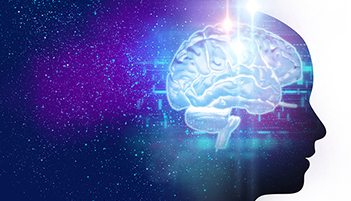HOW CAN WE HELP YOU? Call 1-800-TRY-CHOP
In This Section
When Are Obsessive Compulsive Symptoms a Sign for Serious Psychiatric Conditions?

The findings:
Obsessive compulsive symptoms (OCS), which include intrusive thoughts, urges, mental images, and repetitive behaviors, are common in community youth. But while OCS are often considered developmentally appropriate, researchers in the Lifespan Brain Institute (LiBi) at Children’s Hospital of Philadelphia and the University of Pennsylvania have found that some OCS patterns – specifically bad intrusive thoughts – have stronger associations with serious psychiatric conditions such as depression, psychosis, and suicidal ideation. Other types of OCS, such as those surrounding cleaning or contamination, were not associated with major psychiatric conditions.
Why it matters:
A high proportion of children and adolescents (approximately 40 percent) engage in obsessions or compulsions. For most children, these behaviors are benign and don’t reach threshold criteria for an obsessive compulsive disorder (OCD). Yet many children and adolescents with serious psychiatric conditions, above and beyond OCD, often have obsessive compulsive symptoms. There is a gap in clinical practice of knowing which OCS presentation should be considered a red flag for serious psychopathology. By distinguishing which OCS factors have higher associations with comorbid serious psychiatric conditions, the study may have implications for mental health policies and general adolescent health policies, perhaps guiding clinicians to look for specific symptoms in their practice that may reveal substantial risk for youth depression, psychosis, and suicide ideation.
Who conducted the study:
A team of LiBi researchers conducted the study, led by Ran Barzilay, MD, PhD, a child psychiatrist research scientist at LiBI, and Raquel Gur, MD, PhD, the director of LiBI, who established the Philadelphia Neurodevelopmental Cohort that was studied in the present research.
How they did it:
The team analyzed data from more than 7,000 youth (ages 11 to 21) from the Philadelphia Neurodevelopmental Cohort who had participated in psychiatric interviews, including screening for OCS and other major psychopathology domains. With this information in hand, the researchers investigated the association between four factors comprising sub-clinical OCS (bad intrusive thoughts, repeating/checking, symmetry, and cleaning/contamination) and clinical diagnoses of OCD, depressive episodes, psychosis, and suicidal thoughts.
Quick thoughts:
“We hope that these results will propel mental health professionals and non-mental health professionals alike (i.e. pediatricians) to probe for these symptoms during clinical evaluations, as these may prove vital for identifying youth who are on a potentially debilitating psychiatric developmental trajectory,” wrote the researchers in the paper.
What’s next:
While the findings are compelling, the data were collected at a single time point for each research participant; therefore, causal conclusions cannot be made, according to Dr. Barzilay. The research team now plans to investigate the longitudinal trajectory of children with OCS in an effort to learn about mechanisms underpinning the development of serious conditions such as depression, psychosis, and suicide ideation. Elucidation of such mechanisms is a critical step for identifying targets that can be used to guide early or even preventive treatments for serious psychiatric conditions in youth.
Where the study was published:
The study was published in the Journal of the American Academy of Child & Adolescent Psychiatry.
Where to learn more:
Learn more about research at the Lifespan Brain Institute, a Penn/CHOP collaboration.


